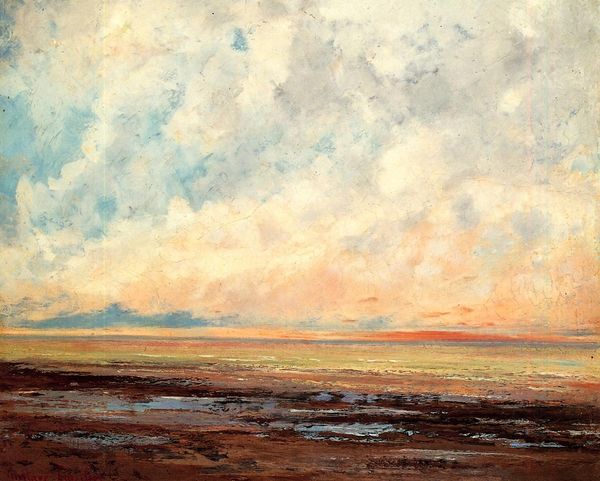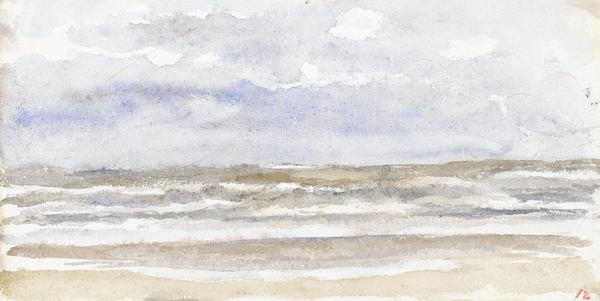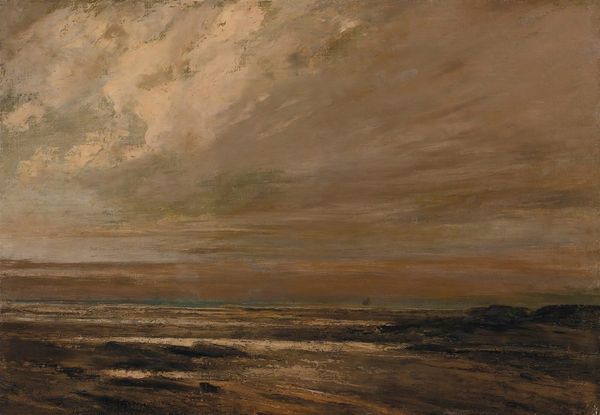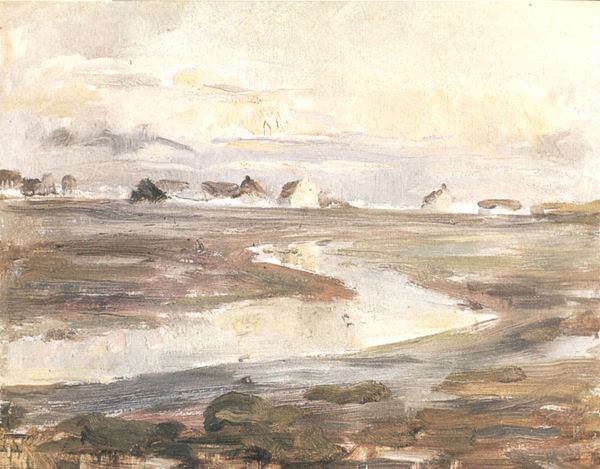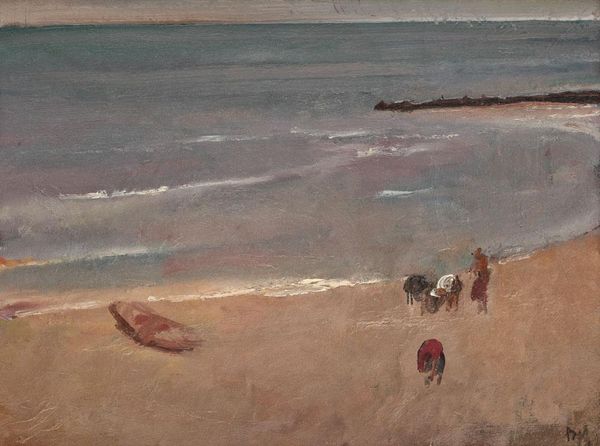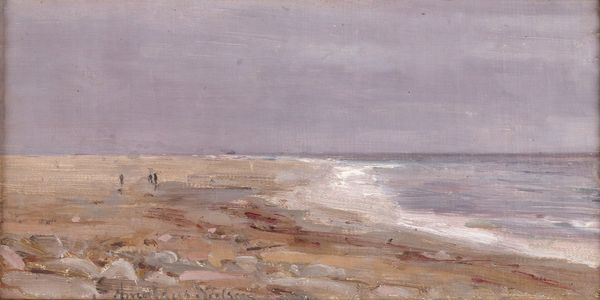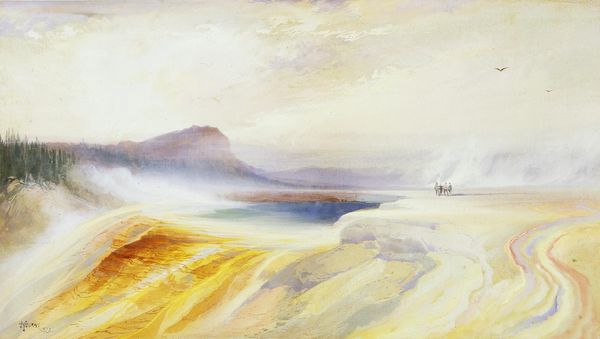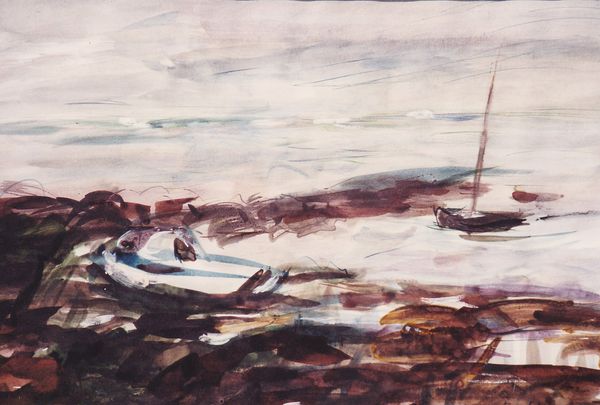
Copyright: Public domain
Editor: This is James Hamilton’s “Beach Scene,” created around 1865. It's a watercolor painting, and it gives me a sense of quiet anticipation. What do you see in this piece? Curator: I see a landscape deeply entrenched in the politics of its time. Consider the historical context: the American Civil War was drawing to a close. Seascapes, often read as neutral, could also function as powerful metaphors. What stories do you think the artist is trying to convey? Editor: I hadn't thought about the Civil War at all. So the ships in the distance, the figures on the beach...could they represent something beyond just a leisurely day? Curator: Absolutely. Think about the concepts of freedom and movement inherent in the sea, compared to the restricted lives of many during that era. Look at how light and shadow are used. Is there a sense of hope or uncertainty in the way Hamilton portrays the light breaking through the dark clouds? Editor: Now that you mention it, there's a real contrast. The right side feels heavier, almost ominous, while the left side seems brighter. I wonder if it reflects the uncertainty of the time... a glimmer of hope amid deep struggle. Curator: Precisely. It is important to consider these paintings beyond the aesthetic and towards a cultural lens that invites dialogues around identity, race, and politics in 19th century America. What’s your takeaway? Editor: I'll never look at a "simple" seascape the same way again. It's amazing how historical context can completely change your perception. Curator: Indeed! Art constantly challenges us to see beyond the surface and interrogate the power dynamics at play in shaping our interpretations.
Comments
No comments
Be the first to comment and join the conversation on the ultimate creative platform.



